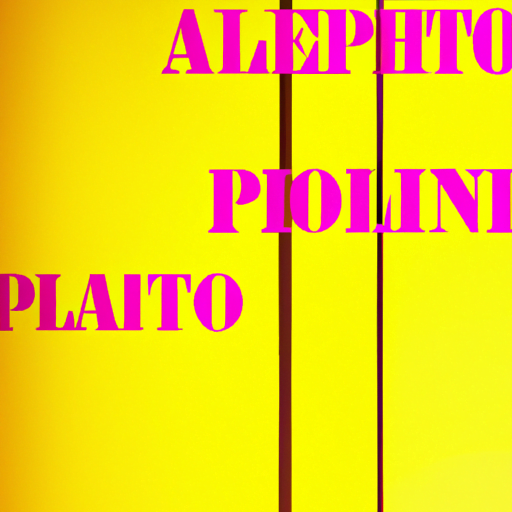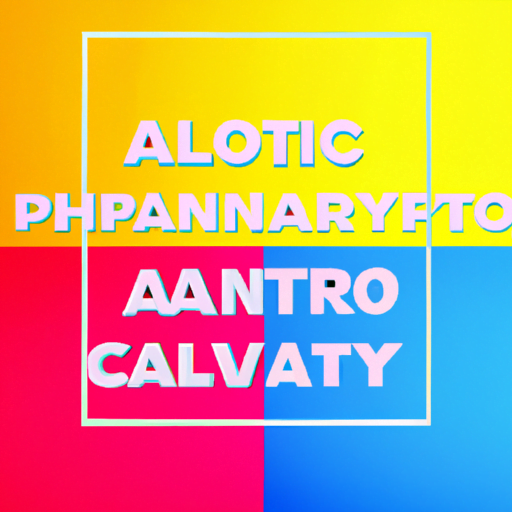
-
Table of Contents
- Exploring Contemporary Kinetic Typography
- The Evolution of Kinetic Typography
- Techniques in Contemporary Kinetic Typography
- Applications of Kinetic Typography
- Case Studies: Successful Examples of Kinetic Typography
- 1. “The Power of Words” by Andrea Dorfman
- 2. “The Girl Effect” by The Nike Foundation
- 3. “The Pen Tool” by Matt Borchert
- The Impact of Kinetic Typography
- Conclusion
Exploring Contemporary Kinetic Typography

Kinetic typography, also known as motion typography or moving text, is a dynamic form of visual communication that combines text and motion to create engaging and impactful messages. It has gained significant popularity in recent years, with its application ranging from advertising and marketing to film and video production. In this article, we will explore the world of contemporary kinetic typography, its evolution, techniques, and its role in modern communication.
The Evolution of Kinetic Typography
Kinetic typography has a rich history that dates back to the early 20th century. It first emerged as a technique in the field of graphic design, where designers experimented with moving text to create visual interest. However, it wasn’t until the advent of digital technology that kinetic typography truly flourished.
The rise of computers and software like Adobe After Effects revolutionized the way kinetic typography was created. Designers now had access to powerful tools that allowed them to manipulate text in ways that were previously unimaginable. This led to a surge in the popularity of kinetic typography, as it became easier and more accessible to create dynamic and visually appealing text animations.
Techniques in Contemporary Kinetic Typography
Contemporary kinetic typography employs a wide range of techniques to bring text to life. These techniques include:
- Typography Animation: This technique involves animating individual letters or words to create movement and visual interest. Designers can apply various effects such as scaling, rotation, and opacity changes to make the text appear dynamic.
- Text Transitions: Text transitions are used to smoothly transition between different pieces of text. This technique is often used to convey a sense of continuity and flow in the message.
- Layering and Depth: By layering text elements and applying depth effects, designers can create a sense of depth and dimensionality in their kinetic typography animations. This technique adds visual interest and makes the text appear more immersive.
- Sound Integration: Sound plays a crucial role in enhancing the impact of kinetic typography. By synchronizing the movement of text with sound effects or music, designers can create a more immersive and engaging experience for the viewer.
Applications of Kinetic Typography
Kinetic typography has found widespread application in various fields, including:
- Advertising and Marketing: Kinetic typography is often used in advertising and marketing campaigns to grab the viewer’s attention and convey key messages effectively. Its dynamic nature makes it ideal for creating memorable and impactful advertisements.
- Film and Video Production: Kinetic typography has become a popular tool in film and video production, where it is used to enhance storytelling and convey emotions. It can be used to introduce characters, display dialogue, or highlight important information.
- Educational Content: Kinetic typography is also used in educational content to make complex concepts more accessible and engaging. By animating text and incorporating visuals, educators can create interactive and informative learning experiences.
Case Studies: Successful Examples of Kinetic Typography
Let’s take a look at some successful examples of kinetic typography:
1. “The Power of Words” by Andrea Dorfman
In this short film, Andrea Dorfman combines animated typography with spoken word poetry to create a powerful and thought-provoking message. The kinetic typography enhances the impact of the spoken words, making the viewer more engaged and emotionally connected to the content.
2. “The Girl Effect” by The Nike Foundation
The Nike Foundation’s “The Girl Effect” campaign utilizes kinetic typography to raise awareness about the importance of investing in girls’ education. The dynamic text animations, combined with compelling statistics, create a sense of urgency and inspire action.
3. “The Pen Tool” by Matt Borchert
In this kinetic typography animation, Matt Borchert showcases his skills by animating the process of creating letterforms using the pen tool in Adobe Illustrator. The animation is not only visually captivating but also serves as a tutorial for aspiring designers.
The Impact of Kinetic Typography
Kinetic typography has a significant impact on the way messages are conveyed and received. Its dynamic nature captures the viewer’s attention and makes the content more memorable. Studies have shown that incorporating kinetic typography in presentations and videos can lead to increased comprehension and retention of information.
According to a study conducted by the University of Minnesota, students who were exposed to kinetic typography in educational videos performed better on tests compared to those who were presented with static text. The movement and visual interest created by kinetic typography help to stimulate cognitive processes and improve information processing.
Conclusion
Kinetic typography has evolved from a niche technique to a powerful tool in contemporary communication. Its ability to combine text and motion creates engaging and impactful messages that resonate with viewers. By employing various techniques and integrating sound, designers can bring text to life and enhance the overall communication experience.
Whether it’s in advertising, film production, or education, kinetic typography has proven to be an effective way to convey information and evoke emotions. As technology continues to advance, we can expect to see even more innovative and creative uses of kinetic typography in the future.
So, the next time you come across a captivating video or advertisement with moving text, take a moment to appreciate the artistry and impact of contemporary kinetic typography.
